Check out the Nov. 22 edition of What’s Trending in Aerospace, where editors and contributors for Avionics International bring you some of the latest headlines happening across the global aerospace industry.
Commercial
Southwest Airlines CEO Sends Letter to Passengers on 737 MAX Return to Service

Southwest airlines CEO Gary Kelly sent a letter to passengers discussing the Boeing 737 MAX aircraft’s return to passenger carrying service. (Southwest Airlines)
Southwest Airlines is estimating that the Boeing 737 MAX, which was approved by the FAA to return to passenger carrying service on Nov. 18, will re-enter its flight operational fleet by the second quarter of 2021.
The Texas-based carrier’s CEO Gary Kelly published a letter to passengers about its return to service, explaining the next steps.
“Southwest is in receipt of the FAA’s directive regarding flight control software updates and additional Pilot training related to the MAX, and we are ready to meet each requirement. There is much work to be done before our MAX aircraft will resume service, which we estimate will likely take place no sooner than the second quarter of 2021,” Kelly said.
Before returning the aircraft to service, every Southwest pilot will complete additional required flight training in one of their nine 737 MAX simulators and will complete additional FAA-required computer-based training covering MAX procedures, according to Southwest Airlines. Southwest will also require active pilots to re-take their original 737 MAX computer-based differences training.
Additionally, Southwest will conduct multiple readiness flights on each of the 34 MAX aircraft in their fleet according to Kelly.
“At Southwest, we only operate Boeing 737s, and our Pilots are highly trained and experienced at flying the aircraft. In fact, before the 737 MAX was grounded, Southwest Pilots flew almost 40,000 flights on the aircraft, which is more than 89,000 flight hours. Now, we’ll approach returning the MAX to service with the same commitment to training that we’ve employed for almost 50 years coupled with an uncompromising and unwavering commitment to Safety,” Kelley said.
Check out a video from Southwest’s VP of air operations, Alan Kasher, with more information about pilot training that must occur prior to the 737 MAX returning to service.
Swedish Optimization Service for Greener Aviation
AVTECH Sweden is offering a new optimization service that they say can save hundreds of tons of fuel per month with little investment. AVTECH’s services optimize flight paths and upload small amounts of data to onboard equipment, according to a Nov. 18 press release.
“By optimizing the different phases of a flight, we can easily avoid unnecessary use of the engines, which means fuel savings,” Stig Patey, Norwegian airline pilot and project manager, said in a press statement. “Just by flying smarter, we have counted an average fuel saving of 22 kg per flight in the descent phase and about 1.6 % in the cruise phase.”
Norwegian Airlines has used AVTECH’s services to optimize the climb, cruise, and descent phases for aircraft, according to the release.
“The savings we have achieved is good business for us and good news for the environment”, Patey said in the release. “The best thing is that we did not have to invest in any new onboard equipment to achieve the reductions, since all calculations are delivered as a service individually to all aircraft.”
Military
Is Switzerland Getting F-35s?
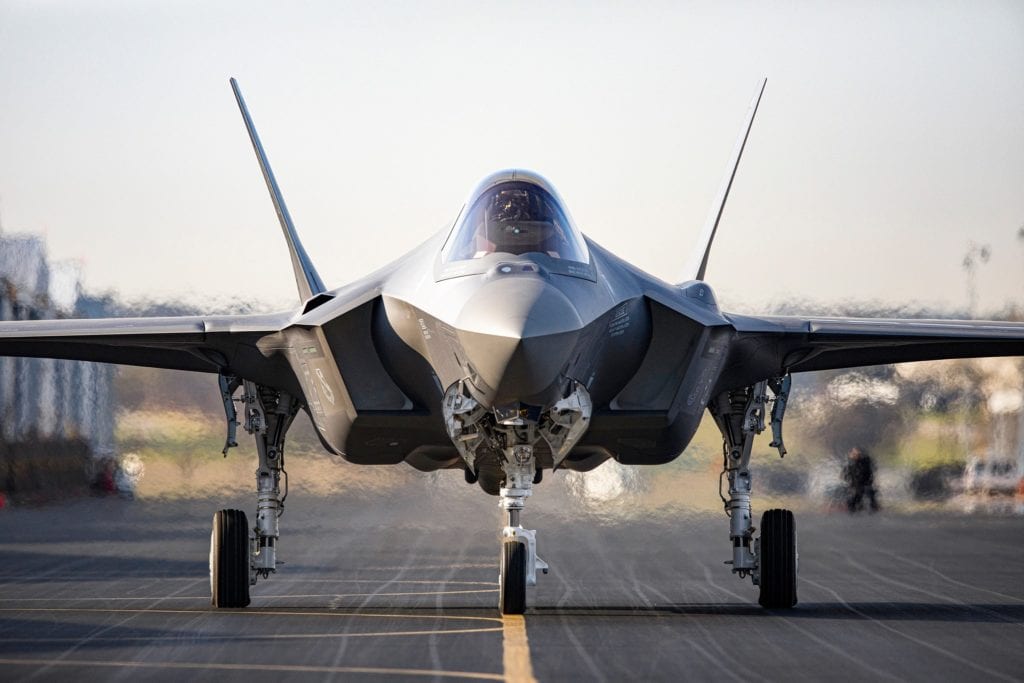
Eilson AFB, Alaska received its first two F-35A Lightning IIs on Apr. 21 (United States Air Force Photo)
Lockheed Martin submitted a proposal to the Swiss government for an F-35 package that includes 40 F-35A aircraft, a sustainment solution with autonomy requirements, and a training program, according to a Nov. 19 press release.
“We are confident that our F-35 offer is the best and most affordable solution for the Swiss NFA competition,” Greg Ulmer, F-35 Program vice president and general manager, said in a press statement. “We are offering the only 5th generation fighter at the cost of 4th generation aircraft while offering Switzerland an aircraft that will protect Swiss sovereignty for decades to come.”
Included in the package is the option to have Lockheed Martin assemble four aircraft in Switzerland to give their Air Force an understanding of the airframe and a six-month spares package to make sure they can conduct autonomous operations. The agreement would use the F-35 Global Support Solution.
US Navy MH-60R Gets New Submarine Detection Sensor
Lockheed Martin will be integrating Magnetic Anomaly Detection-Extended Role (MAD-XR) systems on six Navy MH-60R helicopters as part of a new subcontract announced with CAE. The integration will give the MH-60R the ability to detect submarines and could be used for navigation in a GPS-denied environment, CAE told Avionics International.
The integration will be completed by Lockheed Martin under phase one of the contract by 2023.
“Over the past several years we have conducted several trials with the U.S. Navy to confirm the capabilities of the MAD-XR system on the MH-60R helicopter,” Thomas M. Kane, director of naval helicopter programs at Lockheed Martin, said in a press statement. “Adding this to the MH-60R’s sensor suite will further advance the capabilities of the world’s most advanced anti-submarine warfare helicopter.”
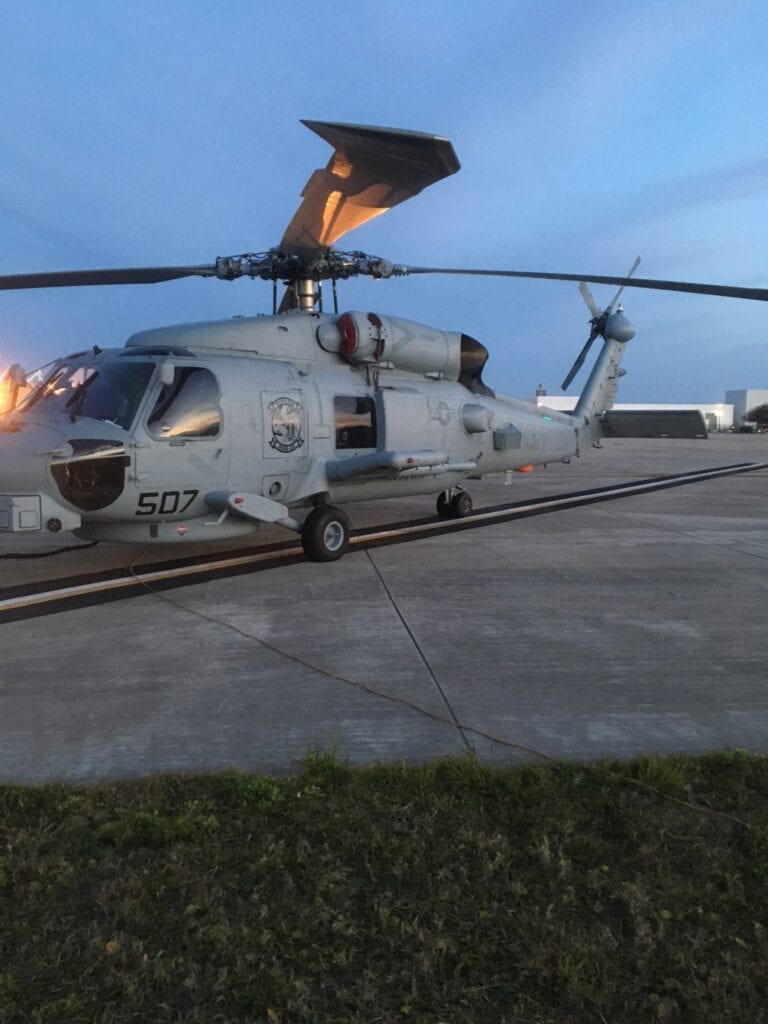
The integration will give the MH-60R the ability to detect submarines and could be used for navigation in a GPS-denied environment. (CAE)
The MAD-XR is mounted on the tail area of the aircraft and can sense changes in the Earth’s magnetic field by using highly sensitive magnetometers. It can detect anomalies up to 1,200 meters and then provides the submarine location in lateral and vertical separation at the closest point of approach, according to CAE.
“The integration of our MAD-XR system on the U.S. Navy’s MH-60R helicopter is testament to its powerful magnetic detection abilities,” Daniel Gelston, group president of defense and security at CAE, said in a press statement. “The MAD-XR system can provide defense forces with enhanced capabilities for operational missions such as submarine detection and search and rescue.”
The MAD-XR is a smaller version of the CAE AIMS AN/ASQ 508 MAD system with reduced size and weight but the same capabilities. The MAD-XR weighs about 2.25 kilograms compared to the 27 kilograms AN/ASQ 508A and can generate 30W of continuous power. Because of its small size and weight, the MAD-XR can be used on small aircraft and unmanned aerial systems (UAS).
While this contract only integrates the MAD-XR system on six MH-60R helicopters, there is a plan to integrate the system on more of the U.S. Navy fleet as well as with partner nations like Australia, a representative from CAE said.
Connectivity
Viasat Buys Eutelsat’s Share of Euro Broadband Infrastructure
Viasat is making moves to strengthen its European position in the broadband market. The satellite operator announced Thursday it is purchasing the remaining 51 percent share of Euro Broadband Infrastructure(EBI), the wholesale broadband services business created in partnership with Eutelsat Communications in 2016. EBI operates the KA SAT satellite and provides fixed and mobile broadband services on a wholesale basis in the European and Mediterranean markets.
Viasat is requiring the remaining 51 percent for $166 million (140 million euro). The transaction may be adjusted up or down by $24 million (20 million euro) two years after closing depending on performance metrics.
Viasat said this wholesale business will add to its retail broadband in select European countries, and its In-Flight Connectivity (IFC) service in Europe, providing a foundation for growth ahead of the launch of the ViaSat-3 global constellation. The second ViaSat-3 class satellite, which will cover Europe, Middle East and Africa, is targeted for launch in 2022.
Check out the full article as first published in Via Satellite, a sister publication to Avionics International.
Skytrac Partners With Scandinavian Avionics
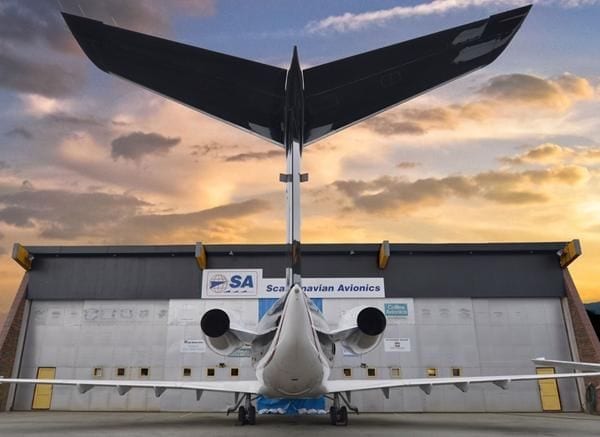
(Scandanavian Avionics)
Skytrac Systems is partnering with Scandinavian Avionics, the company recently revealed. The partnership’s goal is to increase market share for Skytrac’s broadband and midband satcom terminals. The new terminals aim to provide operators with increased capabilities and bandwidth up to 704 kbps.
Scandinavian Avionics provides turn-key avionics solutions for civil and military aircraft, Unmanned Aircraft Systems (UAS), as well as Maintenance, Repair, and Overhaul (MRO) and Supplemental Type Certificates (STC) support. This partnership will enable Skytrac to explore segments such as unmanned, military, helicopters, and business aviation.
“We’re very interested to explore the SDL-350 and ISAT-200A-08 SATCOM systems,” said Michael Truelsen, CEO of Scandinavian Avionics. “We believe there is a strong market for Iridium Certus to compete with the legacy satellite systems, and we have great expectations for Iridium Certus from our customers as well. In general the entire product range within Skytrac’s portfolio fits very well with our current capabilities and offerings, and we share the mindset of Skytrac; providing solutions, rather than products for our customers.”
In September, Iridium added Skytrac to its Certus 9810 transceiver manufacturing network.
Unmanned
XTI Aircraft and VerdeGo Aero Partner for TriFan 200 Program
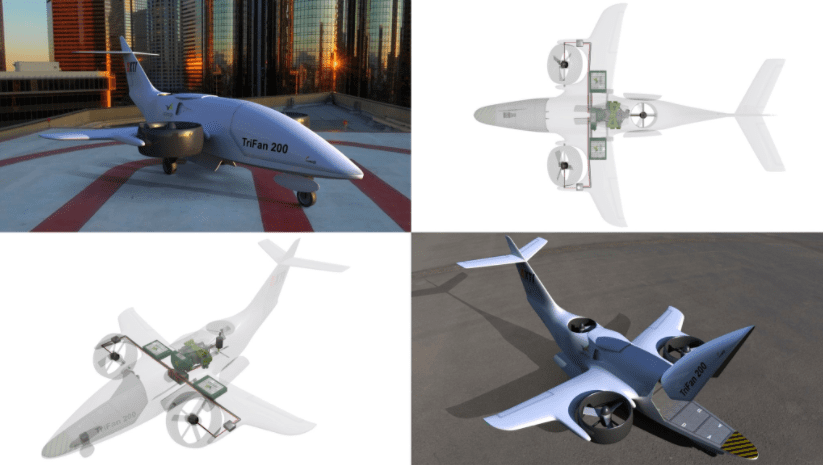
XTI Aircraft Company and VerdeGo Aero are partnering to develop an autonomous vertical takeoff and landing (VTOL) aircraft, the XTI TriFan 200. (XTI Aircraft via Twitter)
XTI Aircraft Company and VerdeGo Aero are partnering to develop an autonomous vertical takeoff and landing (VTOL) aircraft, the XTI TriFan 200. The TriFan 200 will have a payload of 500lbs and range of 200 nautical miles, according to a Nov. 19 press release.
According to the release, the XTI TriFan 200 will be used in logistic operations enabling cargo delivery in congested urban areas. It can also be used in remote locations for longer-range transportation or military logistics missions.
“The TriFan 200 aircraft will open up a significant new market for XTI to address the needs of cargo and logistics operators globally,” Robert LaBelle, CEO of XTI Aircraft, said in a press statement. “We are excited to be partnered with VerdeGo to leverage their experience with hybrid powertrains combined with our experience from the TriFan 600 program to create an efficient, economical, profitable VTOL aircraft for fleet operators worldwide.”
The XTI TriFan 200 will use VerdeGo’s 180KW generator and high-power battery pack which will allow it to reduce emissions and fuel burn by 35 percent, according to the release. This will also make the aircraft more profitable by reducing operating costs by 40 percent compared to conventional turbine powertrains, according to the release.
“XTI’s TriFan 200 is an outstanding application for VerdeGo’s hybrid powertrain systems and we are excited to support XTI as an early customer,” Eric Bartsch, CEO and Co-founder of VerdeGo Aero, said in a press statement. “XTI’s goals to provide its customers with reliable, high-performance cargo aircraft are ideally matched with the efficiency and low operating cost of VerdeGo’s diesel hybrid powertrains.”
Business & GA
Business and GA Aircraft Shipping and Billings Report Shows Decline in Almost All Categories
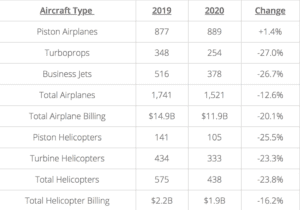
The General Aviation Manufacturers Association published its third quarter shippings and billings data this week. (GAMA)
Turboprop, business jet, and helicopter deliveries have declined in the first nine months of 2020 from 2019 but piston airplane deliveries have increased slightly according to the new General Aviation Manufacturers Associate (GAMA) report on general aviation aircraft shipments and billings.
“While the industry has shown its resilience, it will likely once again face stiff headwinds from the resurgent pandemic, especially given that many European countries have once again gone into lockdown without a common pan-European policy enabling general and business aviation travel across national borders,” GAMA President and CEO Pete Bunce said in a press statement. “Despite these significant challenges, it continues to be our dedicated workforce that enables our industry to persevere through the recovery process.”
Total airplane shipping decreased by 12.6 percent and helicopter shipping decreased 16.2 percent compared to 2019. The biggest decrease occurred in turboprops which saw a 27 percent decline. Piston airplanes, which had a 1.4 percent increase from 2019, were the only aircraft to not show a decline.
Two New EFISs Certified for Airbus AS350/355
The IDU-680 and IDU-450 electronic flight instrument systems (EFIS) from Genesys Aerosystems now have supplemental type certification for Airbus AS350/355 helicopters, according to a Nov. 17 press release.
Both EFIS displays use air data, attitude, and heading reference systems (ADAHRS) and GPS satellite-based augmentation system (SBAS) for precision aircraft operations. They also come with 3D synthetic vision, highway-in the sky (HITS) navigation, geo-referenced Hover Vector, and graphical flight management system, according to the release.
“The AS350 and AS355 are highly utilized, and operators depend on them to be ready when they need them,” Jamie Luster, director of sales and marketing with Genesys Aerosystems, said in a press release. “This avionics upgrade not only adds capabilities of a modern EFIS but removes the weak link in the panel, mechanical gyros.”